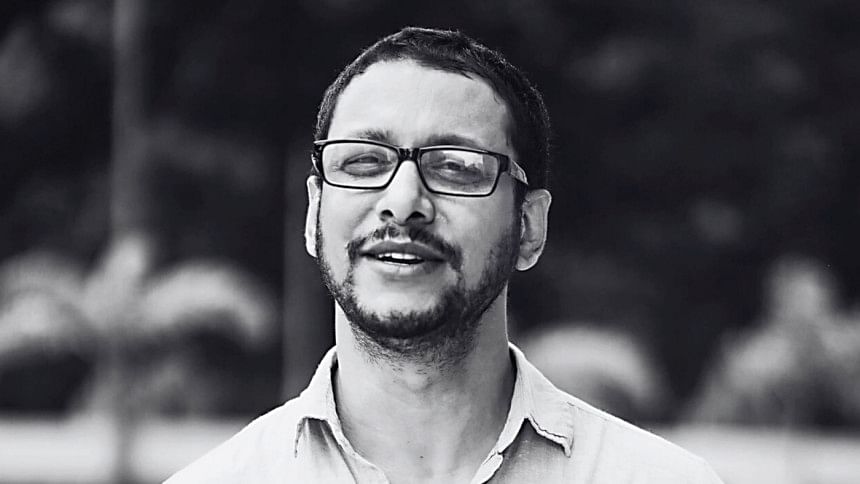In conversation with a marketing communication mind, Indraneel Chattopadhyay

What is a typical day for the Head of Brand & Creative Communication for Nagad?
For my role, I have to put myself in many different shoes at different times of the day. As a firm believer in teamwork, I and my team help develop brand strategies, create marketing & communication plans & creative content, and the other departments and teams. Since we have an in-house creative team, we sometimes have to act as a creative director as well. In Nagad we all share a great environment of teamwork and friendliness. Being a young and vibrant mind, our management always welcomes ideas with substance and newness. And personally, whenever I work with any brand, I eat, sleep, and breathe the brand.
A major part of my job has been supervising the production of content such as digital, print, outdoor activation & visibility, audiovisuals, etc. I and my team also brainstorm with the copywriting team for most of the major communication and TVC ideas. If needed, we work closely with the creative team to come up with headlines and scripts as well. For example: "Deshi Nagad e Beshi Labh".
You have extensive experience in the creative field. How do you think your experience in the creative field helps you in your current role?
Massively. I started my career as a copywriter and visualiser for Interspeed (affiliated with Ogilvy & Mather) in Bangladesh. I had multiple designations because I wanted to learn everything about communication in business. Slowly, I got into rural marketing, activation, and event management. I walked through all avenues of communication. Gradually, I grew up as a 360-degree communication person.
After Interspeed, I moved to Head Office Communication, a promising boutique agency at the time, as a communication strategy planner. Then, I moved to the PRAN-RFL group and later to Otobi as their communications manager. A year later, I moved to Unitrend Limited, which is affiliated with the McCann Worldgroup. In 2014 I moved to Canada and did graduation in Interactive media design and digital media strategy followed by a job in a digital media firm in Toronto. I have worked at a wide variety of brands, from DHL to Pond's, Lipton, Standard Chartered, Lifebuoy, Lux, Polar Ice Cream, Ispahani, Warid Telecom, Westlake Tires, Lakeshore Medical, etc. I have also worked for a leading newspaper called Bhorer Kagoj as a feature writer. That training significantly helped me later on in writing people-focused content.
I travelled all over Bangladesh for my jobs. As such, I had the opportunity to inspect rural and semi-urban areas closely. I keenly observed the people: their lifestyle, purchasing habits, food habits, style of talking, etc.
I started my journey from Ishwaripur, a remote village near Sundarban. I later travelled all over India as a student, painting portraits, meeting people. This entire journey, full of ups and downs, has taught me about the vastness of people's lives. I understood how diversity in people and inclusion are important. All these roles at different types of companies helped me learn and grow as a complete marketeer.
What challenges do you think are present in the industry for marketeers at present?
Market segmentation is a bit tricky in Bangladesh. Demographic segmentation often leads to inaccurate targeting. This is because the listed income of many people differs considerably from their actual income.
Rather, you need to look at their lifestyle and preferences. Psychographic segmentation is the way to go. For example, think about a bus conductor buying imitation Nike shoes and an affluent boy buying original Nike shoes. Both of them have bought the symbol of the brand. As surprising as it may be, there is no difference in their brand preferences. Similarly, a folk tune or jingle you include in your advertisement to attract rural people can also attract opulent people living in urban areas. The consumption patterns are the same.
Thus, if you want your brand to attract the mass, you need to be inclusive in your communication. That is what we aim to achieve with Nagad's advertisements too. We try to provide some wit relief instead of being solemn as everyone loves humour. In the name of aspiration, many become detached from people. But I want to get close to people through easy, friendly communication. I want them to love and relate to my brand.
For everyone aspiring to have a career in marketing and branding, what are the must-haves? What soft skills are important in today's workplace?
Travel as much as you can. You get to see people closely and learn about their lifestyles. I believe practical knowledge is better than theoretical knowledge. Marketers should be fun-loving and welcoming towards people. It is also important to continuously learn and update your knowledge about the world.
Also, learning to be presentable is important. You need to be a good orator to be a good creative director. People need to be convinced by the picturization you're trying to portray through your words and presentation.
Spend time developing skills. Participate in your university clubs, newsletters, and activities. And be open to new ideas.
What do you think many young aspiring marketers are doing wrong nowadays? What should they do instead to have a great headstart to their marketing career?
People often do not continue learning after getting certain degrees. Many people abroad do courses on the side. All kinds of knowledge are connected. Often when I recruit fresh blood, I see they lack knowledge about the outside world. They should keep themselves on top of what is going on in the world, current trends, etc.
They could spend time nurturing their creative side too. There is no rule saying that a professional cannot sing or paint. It can inspire them.
I believe that aspiring marketers should not limit themselves to an office cubicle. Marketers should spend time in markets and outdoors, even in places like tea stalls. There they can observe the local language, behaviour, opinions, and more. If you do not understand the anthropology of the market you are catering to, your marketing will not be as effective. It will not touch people's hearts.
Furthermore, coming up with data-driven, well-thought-out ideas is important. We tend to be instinctive instead. But doing the necessary homework properly and researching well for an idea is critical.
In a country like Bangladesh that is low in digital readiness, how would you advise fintech -or any tech companies for that matter- to advertise to achieve better user acquisition and user adoption?
Most people nowadays consume digital content. The timespan of digital content is very low. You have to hook people in the first 5 seconds, or else they will skip it.
Moreover, we should be responsible regarding what we promote when producing digital content. We need to keep in mind that many impressionable teenagers have phones now and may view our content. Being culturally appropriate and inclusive is also crucial.
After hectic days at work, how do you unwind? How do you maintain a work-life balance?
If you do not think of your work as 'work', rather as your passion, you will get the most fun out of working. Or else, you may end up stressed.

 For all latest news, follow The Daily Star's Google News channel.
For all latest news, follow The Daily Star's Google News channel. 



Comments